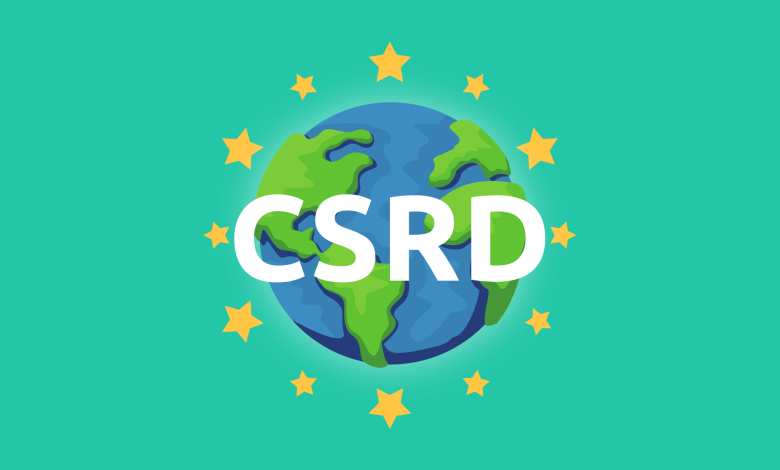Empowering ESG Reporting through CSRD: A New Era of Accountability

As environmental, social, and governance (ESG) considerations continue to reshape business narratives, organizations are increasingly under pressure to report on their sustainability initiatives accurately and transparently. One of the latest frameworks to address this growing need is the Corporate Sustainability Reporting Directive. This new EU regulation is designed to elevate ESG reporting standards across industries, moving companies toward greater accountability and more responsible corporate behavior. In this guest blog, we will explore how the CSRD is transforming ESG reporting, what it means for businesses, and how companies can effectively align their sustainability practices to meet these new expectations.
The Evolution of ESG Reporting
From Voluntary to Mandatory Disclosure
Historically, ESG reporting was voluntary and primarily driven by market pressure, investor demands, and stakeholder expectations. Many businesses initially saw ESG disclosures as an opportunity to showcase their commitment to sustainability, build a positive reputation, and attract ethically-conscious investors. However, without standardized frameworks, the quality and consistency of these reports varied significantly.
The introduction of the Corporate Sustainability Reporting Directive (CSRD) represents a fundamental shift from voluntary to mandatory reporting. By requiring businesses within the EU to adopt a consistent, structured approach to ESG disclosures, the CSRD aims to enhance the reliability of data provided, reduce greenwashing, and help investors make informed decisions. This transformation is critical in driving meaningful change across industries and ensuring that companies are held accountable for their impact on society and the environment.
Key Differences Between CSRD and Non-Financial Reporting Directive (NFRD)
The CSRD builds upon its predecessor, the Non-Financial Reporting Directive (NFRD), which was implemented in 2014. While the NFRD laid the foundation for corporate sustainability reporting in the EU, it applied to a limited number of large companies and offered only general guidance on ESG topics. The CSRD, in contrast, expands its scope to include a broader range of companies and mandates more detailed and rigorous reporting requirements.
Key differences between CSRD and NFRD include:
- Scope: The CSRD applies to all large companies and listed SMEs, significantly increasing the number of organizations required to disclose ESG information.
- Reporting Standards: Unlike the NFRD’s flexible guidelines, the CSRD mandates the use of detailed reporting standards developed by the European Financial Reporting Advisory Group (EFRAG).
- Audit and Assurance: The CSRD introduces mandatory third-party assurance of sustainability reports, ensuring that the information disclosed is accurate and reliable.
- Digital Reporting: The CSRD requires companies to submit ESG reports in a digital format, enabling easy access and comparison for stakeholders.
The Strategic Impact of CSRD on Businesses
Aligning with International Standards
One of the most significant impacts of the Corporate Sustainability Reporting Directive is its alignment with international sustainability standards. The directive is closely tied to frameworks such as the Global Reporting Initiative (GRI), the Task Force on Climate-related Financial Disclosures (TCFD), and the Sustainability Accounting Standards Board (SASB). By harmonizing ESG reporting practices with global standards, the CSRD encourages a level playing field for companies and ensures that their ESG performance is measured against universally recognized criteria.
For businesses, this alignment means that complying with the CSRD can enhance their reputation on the global stage. It also simplifies the reporting process for companies that operate in multiple jurisdictions, as they can use similar metrics and indicators across different regions.
Challenges and Opportunities for Companies
The implementation of the CSRD presents both challenges and opportunities for businesses. On the one hand, meeting the stringent requirements of the directive may require significant investments in data collection, reporting infrastructure, and third-party assurance. Small and medium-sized enterprises (SMEs), in particular, may find the transition to be resource-intensive.
However, the CSRD also offers substantial benefits:
- Enhanced Investor Confidence: The directive’s standardized approach to ESG reporting provides investors with clearer, more comparable data, leading to increased confidence in a company’s sustainability performance.
- Risk Mitigation: By adhering to the CSRD’s detailed reporting standards, companies can identify and address potential environmental and social risks before they escalate into financial or reputational crises.
- Competitive Advantage: Companies that are proactive in adopting the Corporate Sustainability Due Diligence Directive can position themselves as leaders in sustainability, gaining a competitive edge over peers who are slower to adapt.
How to Prepare for CSRD Compliance
To successfully navigate the CSRD’s requirements, businesses should take a strategic and proactive approach to ESG reporting. The following steps can help ensure compliance:
- Assess Current ESG Practices: Companies should start by conducting a thorough assessment of their existing ESG policies, data collection processes, and reporting capabilities. Identifying gaps in compliance early on will allow for a smoother transition to CSRD standards.
- Engage with Stakeholders: Clear communication with stakeholders, including investors, customers, and employees, is essential. Businesses should ensure that their sustainability goals align with stakeholder expectations and address material ESG issues.
- Invest in Data Management Systems: The CSRD requires companies to disclose more granular, standardized data on sustainability metrics. Investing in robust data management systems that can track and report on these metrics is crucial for compliance.
- Implement Assurance Processes: Given the directive’s requirement for third-party assurance, companies should establish internal controls to verify the accuracy and reliability of ESG data. Collaborating with an external audit firm early on can streamline the assurance process.
- Monitor Regulatory Developments: The CSRD is still evolving, with final reporting standards expected to be published by 2024. Staying informed about updates to the directive and any changes to reporting requirements will be essential for maintaining compliance.
Conclusion: A New Era of Corporate Accountability
The CSRD represents a new era of accountability in corporate sustainability, driving businesses to take a more structured and transparent approach to ESG reporting. By mandating consistent and reliable disclosures, the directive aims to foster trust among stakeholders, mitigate risks, and promote sustainable growth across industries. While the road to compliance may be challenging, companies that embrace the CSRD will be well-positioned to thrive in an increasingly ESG-conscious world.



